Protect Your Low Back in Plank to Chaturanga Transitions: How to Keep Your Pelvis Neutral (and Why it Matters)

The common transition from Plank to Chaturanga Dandasana (Yogic Push-Up) to Up Dog is challenging. For many, these transitional movements can create lower back strain if the pelvis is misaligned and the core is not engaged. So let’s examine the ways in which we can intelligently engage the core muscles to safely transition from Plank to Chaturanga and prevent discomfort in the lower back when practicing this common “Vinyasa” sequence.
The Importance of a Neutral Pelvis
Plank Pose really sets the tone of your “Vinyasa” transition, so it’s worth spending some time to make sure you set it up properly. If you have sacroiliac (SI) joint issues and/or you naturally tend toward an anterior pelvic tilt, then Plank Pose is a posture where you will need to pay special attention to healthy core engagement.
In an anterior pelvic tilt, the pelvic girdle tips forward, creating an exaggerated curve in your lower back. In contrast, in a posterior tilt, your pelvis tips backward, reducing the curve in the low back.
What we are aiming for in most yoga poses is to maintain the neutral curve of the lower back, which means the pelvis is also in an upright and neutral position. This means we are neither assuming an anterior or posterior tilt.
How to Find a Neutral Pelvis
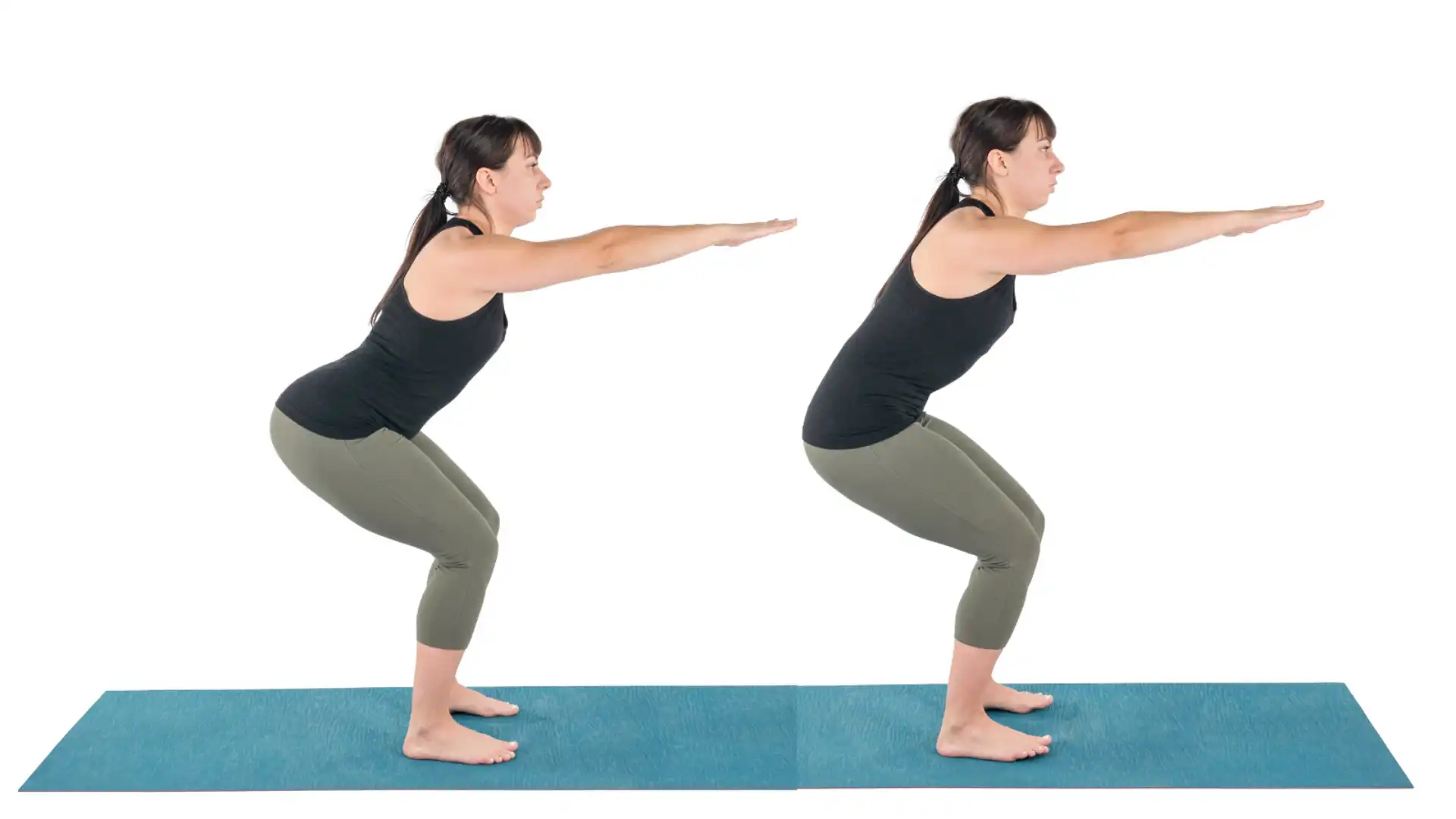
There are many ways to explore pelvic movement, but one of my favorite ways to find this is from a standing position and the use of imagery.
- Stand tall with your feet hip-distance apart.
- Bend your knees and place your hands on your hips.
- Imagine your pelvis is a bowl filled with water: the top rim of the bowl would represent the very top of your pelvic rim (if you place your hands on the top of your hip bones and point your first fingers towards your navel this line is the top edge of the imaginary bowl.) The bottom of the bowl would be where your sitting bones are.
- Tip your “bowl” forward and imagine the water spilling onto the floor in front of you. As you do this, notice that your lower back is in a very pronounced arch. (You are now in an anterior pelvic tilt.)
- Now bring the bowl so that the water is spilling on the floor behind you. This is a posterior pelvic tilt.
- Move between the two extremes several times.
- Slowly find your way to a position where the top line of your pelvis is level with the ground, and the base of the bowl/pelvis is also level with the floor.
- When you find neutral, take a deep inhale. On your exhale, engage the entire core toward the spine. Feel how this engagement supports the neutral alignment you have found.
The Relationship between the Core Muscles and Neutral Pelvic Alignment
When the core muscles are engaged toward the spine, the lower back is supported and can maintain its neutral curve. Engaging the core muscles also holds this pelvis in place as the pelvis and lower back are intimately connected. If you then keep your belly muscles engaged as you transition from Plank Pose to Chaturanga, your pelvis will most likely stay in the right position as you move. This is an important key to safely transition from Plank to Chaturanga.
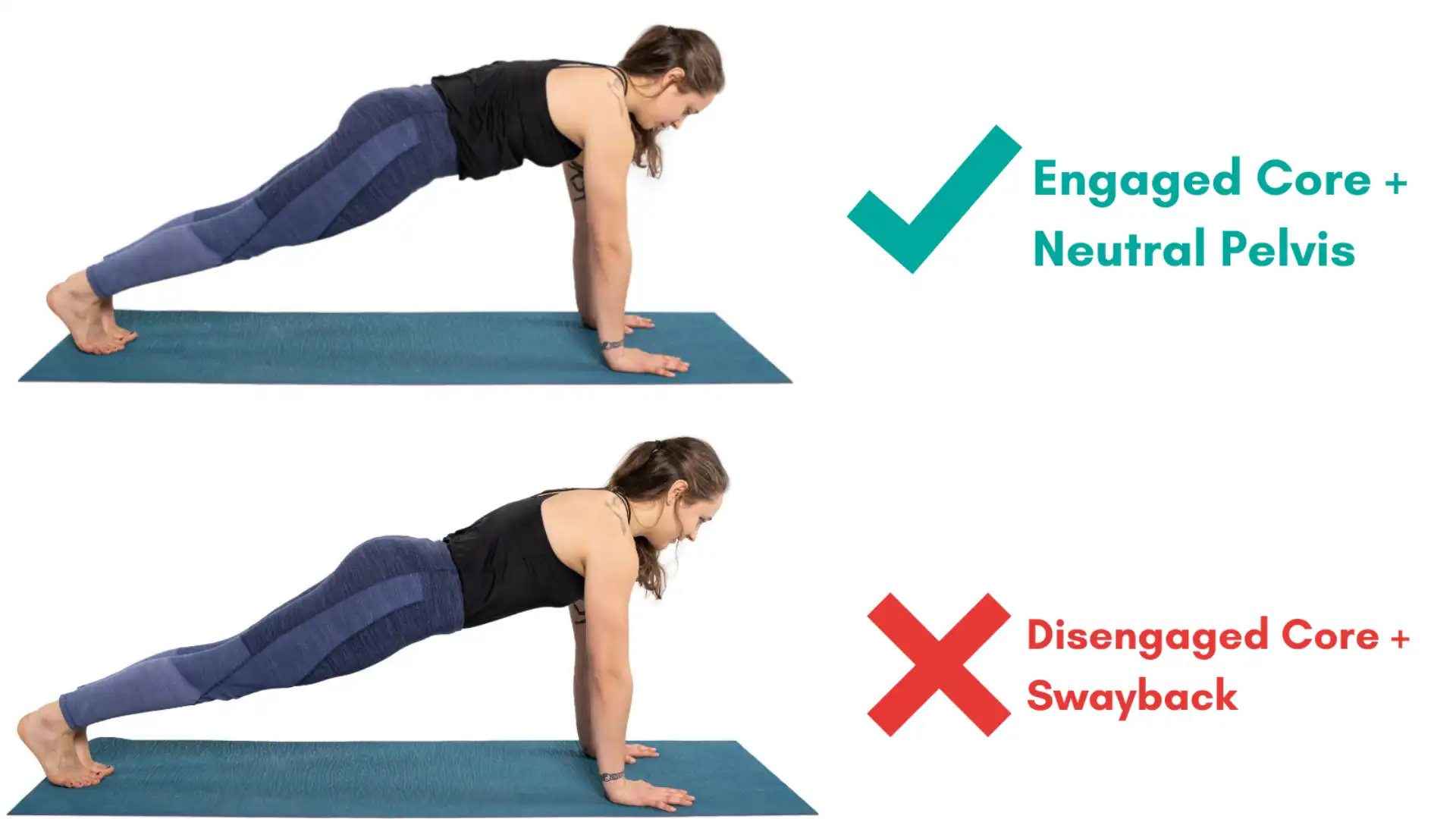
Muscular Engagement: How to Flow Through the Transition
From Plank Pose, the next tricky bit is to maintain the pelvic position as you come down toward the floor into Chaturanga Dandasana. This is quite challenging because you are fighting against gravity. It takes a fair amount of muscular engagement from your arms, core, and legs to get this stability in Chaturanga Dandasana and, generally, years of practice!
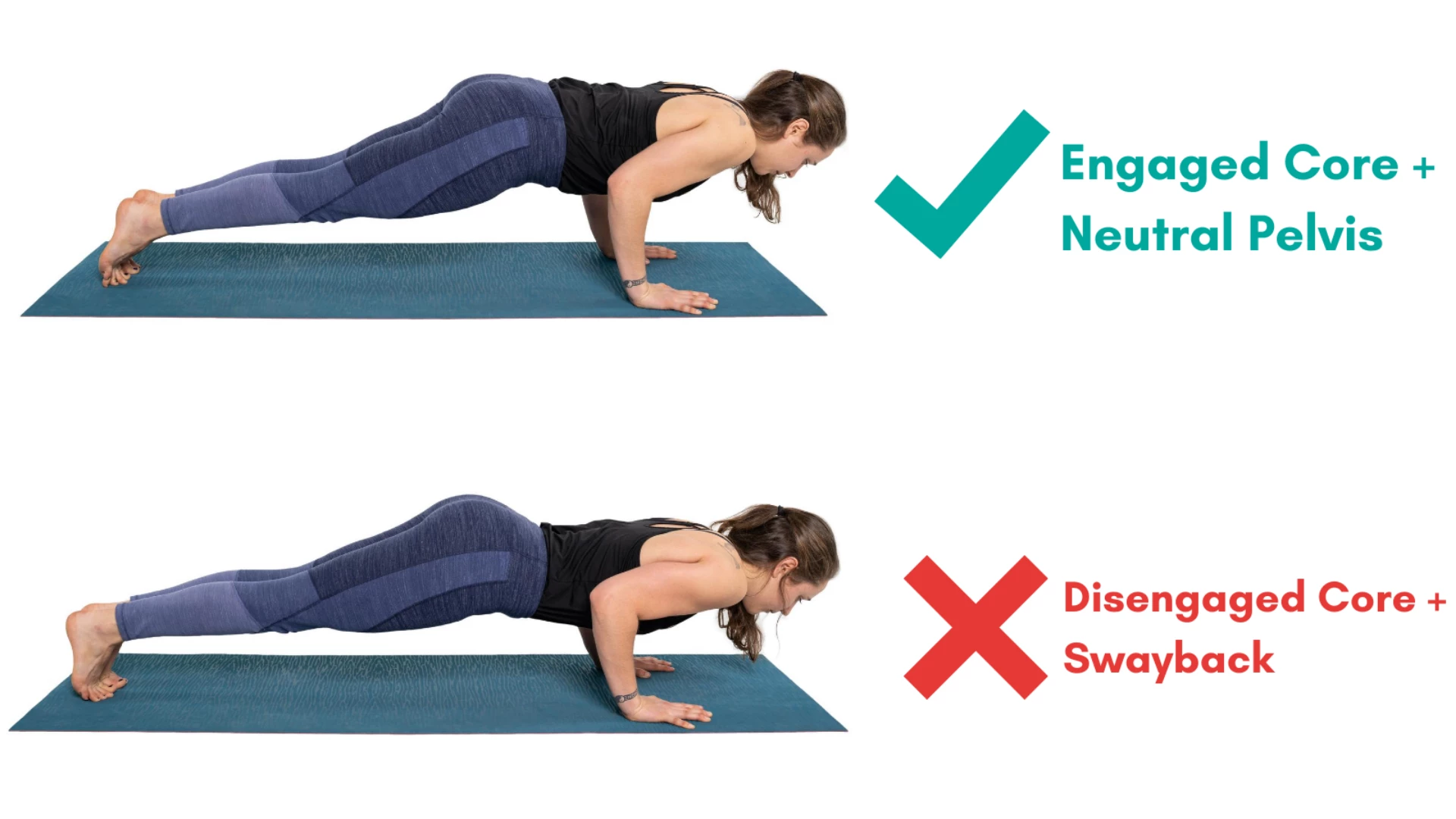
If you are having SI joint issues or lower back pain, I recommend working with your knees on the floor until you are able to keep your back stable. Doing it this way still builds a lot of arm and core strength, but makes the transition much easier on the SI joints because it is easier to keep your pelvis and your back neutral as you lower down.
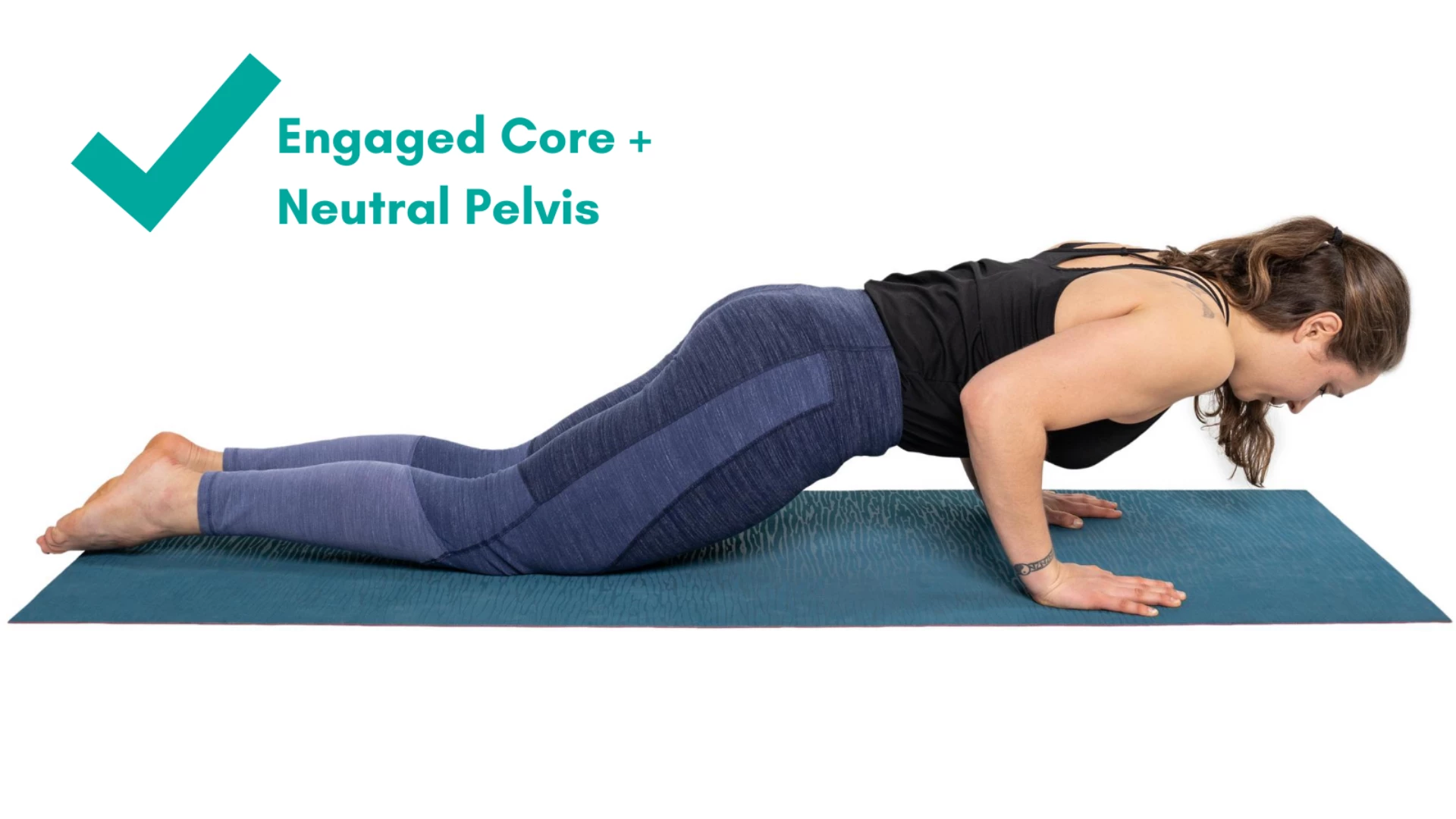
Finally, work on coming up into a backbend. Here again, if you have SI joint issues or are experiencing lower back pain, work with Cobra Pose instead of Upward Facing Dog. A super-safe way of practicing Cobra Pose is to perform the pose with your hands lifted off the floor.
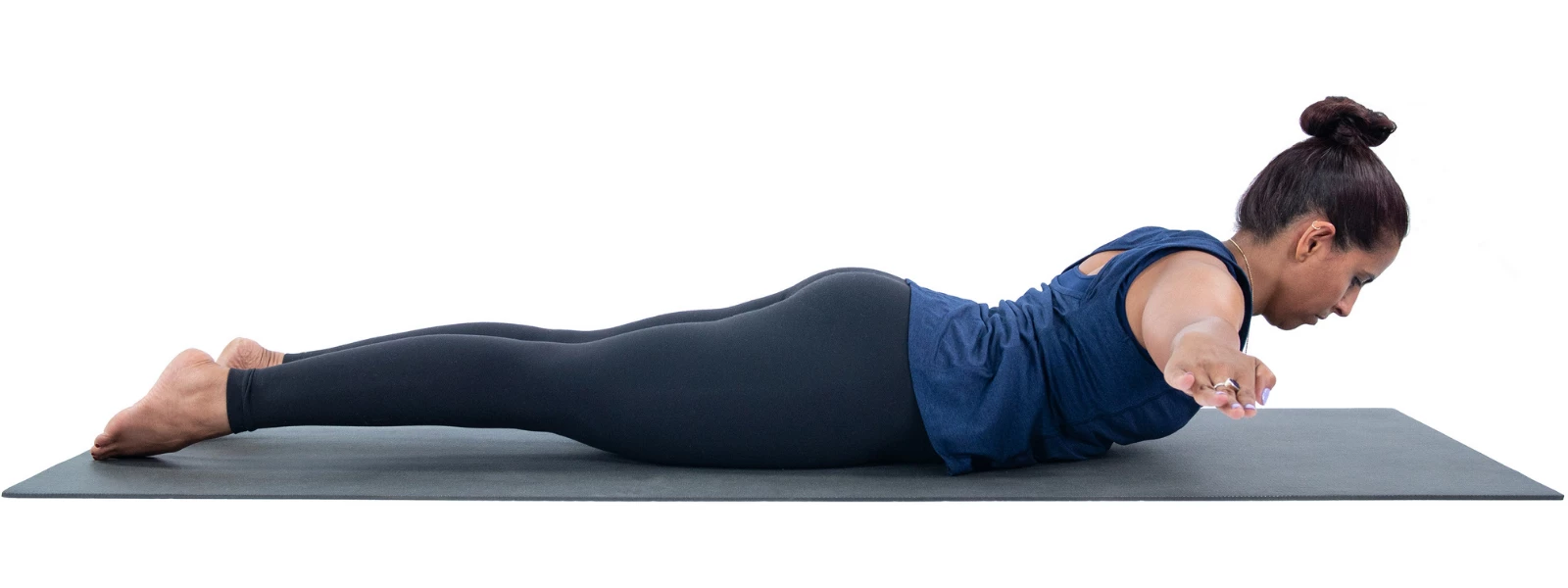
With your hands lifted off the floor, you have to use your core and back muscles at the same time to lift your chest. Resist the temptation to lift your chest higher by pushing your hands into the floor.
If your back is feeling okay and you are comfortable keeping your core engaged and your pelvis in neutral, then work on coming into Upward Facing Dog. Remember, keep your core firm, your pelvis neutral, and your legs strongly engaged in this pose. This will help to get a longer, smoother curve in your lumbar spine (lower back), as you can see in the pictures! These principles are how to safely transition from Plank to Chaturanga.
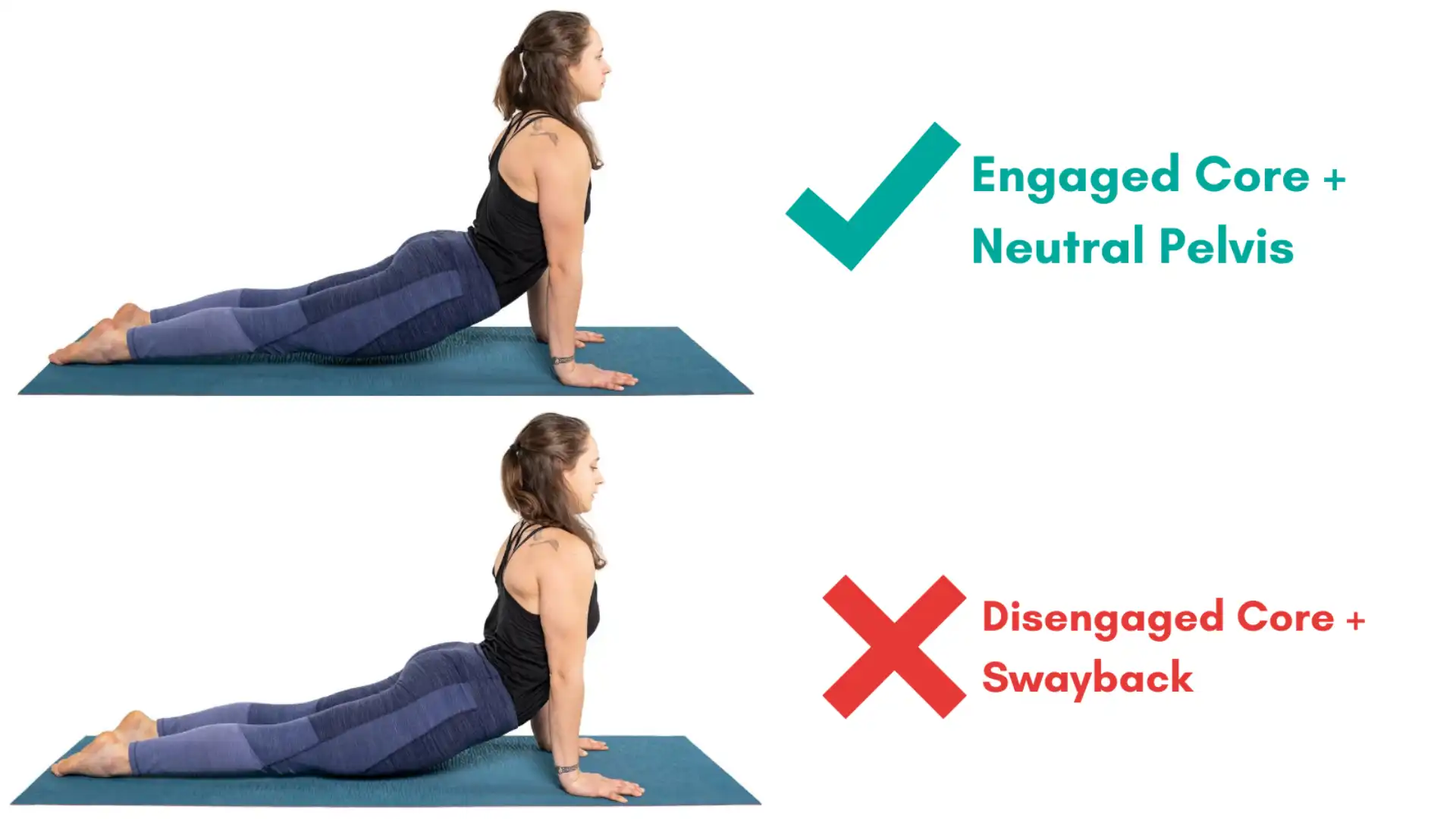
Also, read...
Vrksasana (Tree Pose): Growing Roots
4 Ways to Use Props to Enhance Yoga’s Triangle Pose
Plank Pose: 7 Reasons to Practice and 4 Awesome Versions to Keep You Safe!
Related courses
Keys to Finding Inner Strength: A Yogic Wisdom Path to Developing Greater Resilience
Somatic Yoga for Fascial Unwinding

Lynn Crimando, MA serves as the lead teaching mentor for YogaUOnline’s Wellness Educator Program. She is a yoga teacher, C-IAYT Yoga Therapist, board-certified Health and Wellness Coach, and a Buteyko Practitioner. Lynn is certified by the National Academy of Sports Medicine as both a Certified Personal Trainer and a Corrective Exercise Specialist. She has a private practice in the New York City area and teaches ongoing classes on behalf of Health Advocates for Older People. To learn more about Lynn, visit her website: yogalynn.com.


